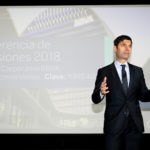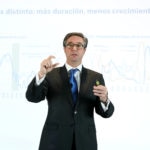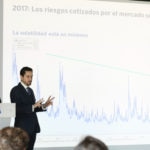BBVA Asset Management: applying behavioral economics to portfolio construction
Over the past three years, the asset allocation team of BBVA Asset Management has overhauled its investment process to bring as much objectivity as possible to decision-making when building a portfolio. Based on the principles of behavioral economics, the new process aims to determine how the power of the mind affects financial decisions.

“If market performance remains positive throughout 2018, it will be the tenth consecutive year in which we deliver positive returns and value to our participants’ portfolios,” said David Carrasco, head of BBVA Pensions, during the opening presentation of BBVA Asset Management’s 2018 Investment Conference, which took place on January 31, in Madrid.
Over the course of this annual event, the investment team of BBVA’s Asset Management unit shared its market outlook with institutional clients, and explained the decisions that are going to be adopted in terms of portfolio construction.
for the past two or three years,” said Jaime Martínez, Head of Asset Allocation. “Our principles draw inspiration from behavioral finance and economics, which study how the power of the mind affects the decisions we make,” he said.
The key is to identify the essential ingredients of the assets to capture their profitability”
During his presentation, Martínez discussed the 4-P’s model that guides BBVA Asset Management’s investment process: People, Processes, Philosophy and Performance. And he focused on two of the four: Philosophy, or the pillars that govern decision-making and the process, or how this philosophy is applied.

Jaime Martínez, Head of Asset Allocation, during the opening presentation of BBVA Asset Management’s 2018 Investment Conference. - BBVA
“We believe in active management”
BBVA Asset Management’s philosophy is based on the idea that markets are not efficient. “And since they aren’t efficient, we believe in active management; we believe that there are ways to improve passive management,” said Jaime Martínez.
Other pillars of the unit's approach include asset allocation, i.e. focusing on portfolio construction; the search for an asymmetric return profile, where it is more important to monitor losses than earnings; a cost-efficient investment, and the search for alternative risk premiums. “The key is to identify the essential ingredients of the assets to capture their profitability,” he explained.
For the Head of Asset Allocation of BBVA AM, a pivotal issue in the investment process is not to eliminate the human factor, but to know it, detect it and isolate it, in order to mitigate its impact and capitalize on the mistakes of others.
“For this, we believe in discipline, in objectivizing the decision making process, in simplicity, in investing when chances are favorable; in diversifying the number of investment decisions and in applying a set of basic management rules, such as cutting losses and letting profits increase,” he added.
This philosophy translates into a disciplined investment process, consisting of two types of decisions: strategic decisions, with a three- to five-year perspective, and tactical decisions, with a shorter-term outlook (one to nine months).

Joaquín García Huerga, Head of Global Strategy of BBVA AM. - BBVA
It is very hard to short-circuit the U.S. economy while real interest rates remain at about zero"
A mature cycle, not an exhausted one
Joaquín García Huerga, Head of Global Strategy of BBVA AM, took the floor after Jaime Martínez to go over the macroeconomic and market environment forecasts for 2018.
“It is true that the cycle is mature, but we think that this will be another good year for stocks. But not so much for bonds, although losses should be moderate,” he said.
BBVA Asset Management has forecast a global growth rate of 3.8% in 2018, with a balanced growth pattern between developed and emerging economies. Also, growth in the euro area is looking more and more solid, and might even beat the forecasted 2.2%.
“We’ve been growing for the past 10 years in the United States and we are seeing the flattening of the yield curve. However, we believe the crisis is still not here,” he explained. “The real interest rate is extremely low. We think it is very hard to short-circuit the U.S. economy while real interest rates remain at about zero. It would take a really steep rate hike by the Federal Reserve to bring the economy to a standstill. But they are raising rates slowly, because inflation prospects are under control.”

Alberto Gómez-Reino, Head of Institutional Client Investments of BBVA AM. - BBVA
An open mind: a broader range of assets to invest
Afterwards, Alberto Gómez-Reino, Head of Institutional Client Investments of BBVA AM explained how the unit´s portfolios have been designed for 2018. “We need to keep an open mind, improve portfolios, because the fixed-income factor is not going to be yielding significant returns in the coming years,” he said. “Our basic portfolio structure is favorable in stocks and moderate in bonds, and prioritizes peripheral European bonds over German bonds.”
Besides strengthening its investment process, BBVA Asset Management is expanding its investment-grade asset portfolio. We have increased the assets and strategies, including assets with better profitability prospects and other risk factors.
In terms of traditional assets, the bias has been shifted towards more global and diversified portfolios. At the same time, we have introduced alternative investments such as illiquid assets (private capital, private debt, infrastructure…), absolute return strategies and risk premia strategies .
“We are building the portfolio with a much broader set of options, which should cause the return-risk spectrum to expand, to improve,” said Gómez Reino. “Faced with a low-return scenario, what we try to do is to improve profitability without altering the risk level.”

"The fixed-income factor is not going to be yielding significant returns in the coming years"